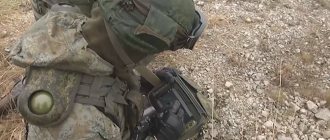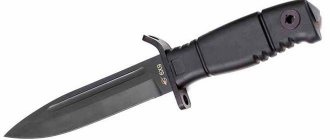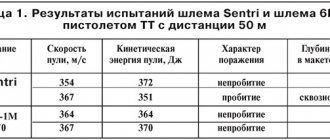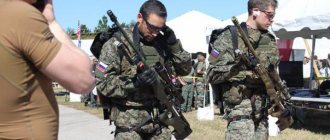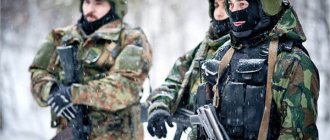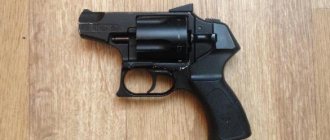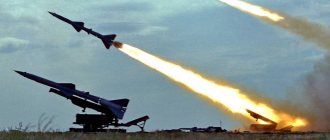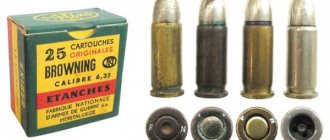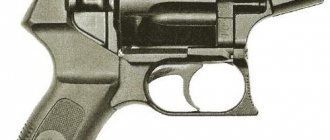The "Ratnik" combat equipment for servicemen is one of the largest modernization projects of the Russian army. As applied to this program, the concept of equipment is so broad and extensive that all its elements are almost impossible to describe in one article or depict in one photograph.
For ordinary soldiers who have been receiving the first Ratnik kits since the end of 2014, this is, first of all, a comfortable uniform made of modern fabrics with many elements for the summer, winter and demi-season periods, lightweight composite protection covering up to 90% of the body, a lightweight head that fits well helmet.
The system is a complex of modern means of protection, communications, weapons and ammunition. According to the creators, the new equipment will be able to compete on equal terms with similar types of equipment of the “soldiers of the future.” The “Warrior” includes about 10 subsystems. In total, the equipment includes more than 70 elements that are interconnected and complement each other structurally and functionally.
The “Ratnik” kit has a modular design and is adapted for operations in a wide variety of conditions and at any time of the day. "Ratnik" was developed on the basis of the "Barmitsa" equipment.
Russian combat equipment "Ratnik" was developed by the Federal State Unitary Enterprise "TsNIITOCHMASH". More than 50 industrial enterprises are involved in the creation of second-generation equipment as part of the Ratnik development work. The general designer of the equipment is Vladimir Nikolaevich Lepin.
Survival fashion
The main goal of developing the “Ratnik” combat equipment is to increase the efficiency of soldiers’ performance of assigned combat missions while reducing the number of losses among unit personnel.
A soldier’s combat equipment set is a complex of five systems integrated into each other: destruction, protection, control, life support and energy supply. That is, the “Ratnik” program covers almost everything that a soldier needs on the battlefield: from shoes and clothing to weapons, medicine, aiming, surveillance, communications, guidance and target designation of artillery and aviation.
In appearance, the new Russian combat equipment is quite aesthetic; it is no worse, and in some ways even prettier than modern American equipment. "Ratnik" is distinguished by differentiated and combined protection of the serviceman. All vital organs of a soldier are covered either with metal-ceramics, or special armor, or protective fabrics such as Kevlar - depending on the assigned tasks. Synthetic protection is widely used in new equipment. The usual helmet was replaced by a helmet. He is able to save a soldier’s head in situations where the old helmet would definitely break through. “Ratnik” is literally crammed with a variety of electronics. Electronic terrain maps, satellite positioning, individual communications for each soldier, night vision systems and lighting devices, as well as much more, will make the Russian soldier an integral part of a unified combat system, which will be controlled by the most modern network-centric technologies.
New generations of small arms are also being developed specifically for Ratnik. A thermal imaging targeting system has already been developed, as well as a special video module that allows you to fire from around a corner or from behind suitable cover. In this case, the transmission of information from the weapon sight to the soldier’s eyecup screen occurs wirelessly.
The total weight of the standard version of overalls and body armor of the 5th protection class is about 10 kilograms, the maximum weight - with a helmet, assault body armor of the 6th protection class, armor plates for the shoulders and hips - is about 20 kg.
The clothing elements of the “Ratnik” set have Velcro for chevrons and shoulder straps. Therefore, removing any identification marks is a matter of one minute.
The “breathable” design of the “Warrior” allows you to continuously wear it for at least 48 hours. The fabric is impregnated with a special compound that allows air to pass through but retains moisture. A winter version of the “Warrior” has also been designed, which includes elements of insulation and heat supply.
The armored suit blocks radiation in the ultraviolet and infrared spectra, which makes the fighter invisible in a thermal imaging sight.
Modularity allows you to attach any pockets to the unloading vest. The winter version will differ only in the availability of heat supply and insulation.
Now let's talk about what is included in the set of domestically produced military equipment "Ratnik"
Armor protection
1) Combined arms helmet 6B47
Today it is recognized as one of the lightest helmets (weight about 1 kg) with a high level of protection (protection against PM shots from a distance of 5 meters), suitable for use in temperature conditions from -50°C to +50°C. The design of the helmet allows the use of communications equipment (active headphones), a night vision device and a tactical flashlight. An adjustable under-neck device helps fit the helmet to your head and provides additional shock absorption against impacts and debris.
2) Body armor 6B45
It is a modification of the 6B43 vest. Depending on the plates used, it provides protection of class 5A or 6A (protection against SVD). The body armor is modular, that is, it allows you to use some of its parts at your discretion. When fully equipped, it protects all vital organs. It differs from its predecessor 6B23 in that it has an integrated UMTBS system for placing pouches, as on general-arms unloading systems (the system is compatible with “MOLLE”, “PALS” pouches). A convenient and fairly lightweight body armor with a built-in quick release system is very easy to put on and take off , and in order to un-equip a wounded soldier, you just need to pull the pin (previously you had to remove the vest over your head or cut the straps).
The body armor from the “Ratnik” kit is equipped with ceramic-composite armor panels made from a layer of ceramic tiles and a composite substrate. Ceramics are distinguished by very high hardness with relatively low weight. The ceramic outer layer effectively breaks up the bullet, while the reinforced composite backing retains bullet fragments and ceramic fragments. As standard, the Ratnik body armor weighs just over 7 kg, which is significantly less than the weight of its predecessor. There is also an assault body armor package, in which the level of protection is increased to the maximum (sixth) class, and bulletproof protection is provided for the side zones and groin area. In this case, the weight of the body armor reaches 15 kg.
This is what a ceramic-composite armor plate looks like after being hit by ten armor-piercing incendiary bullets from an SVD sniper rifle from a distance of 10 m. On the other hand, the same plate looks like new. At the TsNIITOCHMASH enterprise in Klimovsk near Moscow, we were shown an assault chest armor panel developed by NPF Tekhinkom LLC and withstood ten hits of armor-piercing incendiary bullets when fired from an SVD sniper rifle from a distance of 10 m. The reverse side of the plate remained absolutely smooth, without a single bulge. This means that a soldier protected by a body armor with such panels will not receive concussion injuries and will remain combat-ready.
3) Protective kit 6B49
Designed to protect the limbs (arms and legs) and face of a serviceman from shell fragments, mines and grenades, thermal factors, adverse environmental factors, for protection in the area of the shoulder, elbow and knee joints, hips from PM pistol bullets, mechanical damage, as well as for overcoming water obstacles without additional buoyancy elements when conducting all types of combat operations.
Composition: - protective overalls or protective suit (protective jacket, protective trousers), incl. additional removable elements: - protective thigh screens; — a set of reinforcement screens (shoulder, groin, knee-elbow); — a set of damping elements (knee-elbow); - ventilating T-shirt; — protective mask (mask, protective face shield, mosquito net); — protective gloves; — lining (heat-insulating mat, folding heat-insulating lining); — transport bag; - Spare parts. BZK is manufactured in 10 standard sizes, protective gloves are manufactured in 5 sizes. Protective characteristics: - overalls or protective suit - on a total area of at least 120 square meters. dm. from fragments weighing 1 g at speeds up to 250 m/s under normal conditions and up to 180 m/s when exposed to moisture; - protective thigh screens - against fragments weighing 1 g at speeds up to 450 m/s and PM pistol bullets over an area of at least 35 sq.dm.; - a set of reinforcement screens - from fragments weighing 1 g at speeds up to 450 m/s, PM pistol bullets on the area of: shoulder joints - at least 7 sq. in.; knee and elbow joints and adjacent areas of the lower leg and forearms - at least 14 sq. in., groin (protection from PM pistol bullets is not provided) - at least 3 sq. in.; - protective front screen - from fragments weighing 1 g at speeds up to 550 m/s, over an area of at least 5 square meters. dm.; - protective gloves - against fragments weighing 1 g at speeds up to 450 m/s, over an area of at least 5 square meters. dm. The outer fabric of the UPC protection system elements does not support combustion and protects against open flame for at least 15 seconds. The protective properties of the BZK do not change in the temperature range from minus 50°C to plus 50°C and are maintained after exposure to moisture (rain, sleet, etc.). Elements of the UPC (overalls or protective suit, heat-insulating mat, folding heat-insulating pad) provide additional buoyancy of the set and allow the serviceman to swim across water obstacles. Combat clothing (protective overalls or protective suit) is designed to protect against low-speed fragments of the extremities (arms and legs), together with reinforcement screens - from high-speed fragments and PM pistol bullets in the area of the shoulders, elbow and knee joints, groin, together with damping elements - from mechanical damage in the area of the elbow and knee joints. In the summer it can be worn on underwear or a ventilating T-shirt, and in the off-season it can be worn on a summer uniform, in winter conditions it can be worn with detachable insulation from a winter uniform. These protective trousers are worn over shoes. Protective overalls and protective trousers can be put on without removing shoes. To secure the overalls and protective trousers to the belt, a trouser belt from the protective thigh screens can be used. The protective mask together with the protective face shield is designed to protect the face from low- and high-speed fragments and open flames. Worn directly on the head or on the insulation of an armored helmet in cold weather conditions. The protective face shield is intended for use in conjunction with a protective mask, armored helmet and protective goggles for additional anti-fragmentation protection of the face and neck during assault operations, engineering reconnaissance, mine clearance and in other cases. Protective gloves are designed to protect hands and forearms from high-velocity fragments, mechanical shocks, open flames and weakening of the effect of bladed weapons. Protective thigh screens are designed to protect the thighs from high-velocity fragments and PM pistol bullets. The ventilating T-shirt is designed to improve the ventilation of the underwear space when operating the UPC in summer conditions. Worn directly on the body or underwear in summer conditions. The mosquito net is designed to protect the head and neck from blood-sucking insects. When using a mosquito net with a protective helmet, the net is attached to the camouflage cover of the helmet by threading ribbons with loops through the belt loops located on the cover, and fastening the ribbons with buttons. The heat-insulating mat is designed to protect the body from moisture and cold and to overcome water barriers after transforming the mat into a buoyancy element. The heat-insulating folding pad is designed to protect the body from moisture and cold and to be used as a buoyancy element together with a heat-insulating mat. Spare parts are intended for repair of UPC in field conditions. The transport bag is designed for storing and carrying the UPC. Sources of information: Combat protective kit.
Manual. AVYUL.250700.000RE 4) Glasses 6B50
Designed to protect the eyes and part of the face from fragments or external irritants, capable of withstanding hits from fragments measuring 6 mm flying at a speed of 350 m/s. Pairs perfectly with safety helmets.
5) Set of protection for knee and elbow joints - elbow pads and knee pads 6B51.
The kit will protect you if you fall on an asphalt surface. They do not restrict movement and do not rub.
Developer and Designed to protect the knee and elbow joints of servicemen from impacts when moving on the battlefield and operating armored weapons and equipment. Designed for use by military personnel of the ground forces, airborne troops, navy marines and special forces units during all types of combat operations, including parachute landings and amphibious landings. Included in the 6B52 “Ratnik” combat equipment set. The kit provides protection for the knee and elbow joints from impacts with an energy of 14+5 J (when a soldier in combat gear falls onto a concrete base). Protection area: elbow pad – no less than 1.1 dm2, knee pad – no less than 1.5 dm2. The weight of the set is no more than 0.5 kg. Operating temperature - from -40°C to +50°C. The X-shaped anatomical shape of the low-density polyethylene cup provides effective shock absorption and freedom of movement. The air space between the fabric and the cup provides additional shock absorption. The lining is made from a natural pile material that wicks perspiration away from the body, preventing chafing. Adjustable straps provide the soldier with a secure fit and comfort. Source of information: — Kit for protecting knee and elbow joints 6B51. Manual. KLZHT.305615.001RE
Peculiarities
The R-175 portable kit (UNKV-03) consists of the R-168-0.5UM radio station, the AK-3.5 subscriber communicator and the TT-6.5 tactical terminal.
A portable version of the Bussol radio station.
The equipment was first presented to the audience at the MAKS-2011 air show. Military trials took place in December 2012 at the base of the 27th separate motorized rifle brigade at the Alabino training ground near Moscow. Based on the results of military tests, the equipment elements received a positive assessment from the military command. The Ratnik includes several dozen weapons elements, including:
- aramid overalls made from Alutex fiber, capable of withstanding the impact of grenade fragments, mines or shells, and also has a certain fire resistance;
- The protection kit includes body armor (with ceramic plates) of protection class 6A according to GOST R 50744-95 (adopted in 2002) or Br5 class according to the new GOST R 50744-95 (adopted in 2014, is the main one): in an expanded configuration (weight up to 15 kg) or standard (weight up to 9 kg) - without groin protection (armor plate and anti-fragmentation module), bulletproof side armor plates, shoulder pads (anti-fragmentation module). The kit also includes a multi-layer helmet that can withstand a pistol bullet (protection class 1) from a distance of 5-10 meters.
- the kit is equipped with the Strelets control system, which includes means of communication, target designation, processing and display of information, identification, which allows information about the location of a soldier to be transmitted to the command post;
- a communicator that determines the coordinates of a serviceman using GLONASS and GPS to solve the problem of terrain orientation and target designation and other applied calculations;
- energy supply kits;
- safety glasses capable of withstanding 6 mm fragments flying at a speed of 350 m/s;
- shields for knee and elbow joints 6b51;
- water purification filters, autonomous heat sources;
- machine gun, or machine gun, or sniper rifle , equipped with a night vision sight and a thermal imaging targeting system;
- video module for shooting from cover. It consists of a thermal imaging sight and a helmet-mounted monitor with a control system, on which the image from the sight is displayed (developed at OJSC Central Research Institute Cyclone, part of the Ruselectronics holding);
- several types of thermal imaging sights - 1PN139 (large-caliber), 1PN140 (for normal observation) and a variant for reconnaissance (unnamed). Developed at the Central Research Institute "Cyclone", part of the Ruselectronics holding;
- Thermal imaging sight "Shahin" - provides detection, recognition and targeted fire at targets at any time of the day in simple and difficult meteorological conditions;
- day-night sighting system (DNPC) for small arms, including a collimator sight (KP) 1P87, a night monocular (NM) -1PN138, a spotting tube (ZT) -1P90 and a laser target designator (LTs) -1K241. DNPC allows you to significantly increase the effectiveness of hitting targets from small arms, when using a night monocular with a collimator sight or laser designator - to conduct targeted fire at dusk and in low light conditions. A 3x magnification spotting scope can also be mounted on a weapon in addition to a scope. Most of the DNPC devices are developed and manufactured at JSC “Plant Jupiter” in Valdai
- The life support system includes backpacks of various types (a universal backpack with a volume of 50 liters, a raid backpack of 10 liters; a 24 kg unloading vest with interchangeable quick-release elements), camouflage kits, a folding heat-insulating pad, removable insulation for use in winter , a ventilated T-shirt , a vest with compartments for ammunition, mat , raincoat , hat, balaclava, mosquito net;
- tent , sleeping bag;
- frost-resistant rechargeable battery for powering electronic devices. Multiple batteries can be connected. The modular charger allows you to charge from almost all DC and AC sources. One battery can withstand 12-14 hours of active operation;
- active headphones that allow you to communicate during combat;
- knife "Bumblebee";
- (from 2022) sensors for combat vehicles and “friend or foe” soldiers. The device will allow you to distinguish comrades from enemies in combat conditions - regardless of their uniform and camouflage. A serviceman equipped with such a sensor will be able to distinguish “us” from “foe” by looking at the screen of a special device that looks like a mobile phone. It displays on an electronic map the location of the soldier and the location of friendly forces at a given time.
The commander's personal tablet computer is designed to solve control and orientation problems at the tactical level of the command staff.
Wearable receiver indicator NPI2 for a soldier.
- It is planned to eventually introduce an exoskeleton into Ratnik.
The portable set R-175 (UNKV-03) consists of a radio station R-168-0.5UM, a subscriber communicator AK-3.5 and a tactical terminal TT-6.5 Navigation and control system for the tactical level from MKB Compass under the “code” name "Soldier of the 21st Century"
The equipment was first presented to the audience at the MAKS-2011 air show. Military trials took place in December 2012 at the base of the 27th separate motorized rifle brigade in the Alabino training ground near Moscow. Based on the results of military tests, the equipment elements received a positive assessment from the military command.
The Ratnik includes several dozen weapons elements, including:
- aramid overalls made from Alutex fiber, capable of withstanding the impact of grenade fragments, mines or shells, and also has a certain fire resistance;
- The protection kit includes body armor (with ceramic plates) of protection class 6a in an extended configuration (weight - up to 15 kg) or class 5 in a standard configuration (weight - up to 9 kg) according to GOST R 51136-98, GOST R 51112-97 , GOST R 50941-96. And a multi-layer helmet can withstand a pistol bullet (protection class 1) from a distance of 5-10 m.
- the kit is equipped with the Strelets control system, which includes means of communication, target designation, processing and display of information, identification - allowing the transfer of information about the location of a soldier to the command post;
- a communicator that determines the coordinates of a fighter using GLONASS and GPS, to solve the problem of terrain orientation and target designation and other applied calculations;
- energy supply kits;
- safety glasses capable of withstanding hits from 6 mm fragments flying at a speed of 350 m/s;
- shields for knee and elbow joints, water purification filters, autonomous heat sources;
- AK-12 or a modernized AK of other versions, equipped with a night vision sight and a thermal imaging targeting system;
- video module for shooting from cover, consisting of a helmet-mounted minimonitor and a television sight;
- collimator sight "Krechet" and other devices (in addition to the sight, a 3x magnification telescope monocular "Lun" can be installed);
- The life support system includes backpacks of various types (universal backpack with a volume of 50 liters, raid backpack with a volume of 10 liters;
- unloading vest with interchangeable quick-detachable elements), camouflage kits, folding heat-insulating padding, removable insulation for use in winter , ventilated T-shirt , vest with compartments for ammunition, raincoat , hat , balaclava, mosquito net;
- tent , sleeping bag;
- active headphones that allow you to communicate during combat;
- knife "Bumblebee".
The total weight of the kit is up to 22 kilograms in an expanded configuration (without ammunition and weapons) with an assault version of the 6B43 body armor. In the basic version, the weight is up to 17 kilograms (without ammunition and weapons) with the basic version of the 6B43 body armor. Helmet weight 1.056 kg. In general, 90% of the soldier’s body surface is covered. Body armor has several varieties, from light to heavy with insert plates. The marine type of body armor also has the properties of a life jacket, which makes it possible to stay afloat with it. Modularity allows you to attach any pockets to the unloading vest . The winter version differs only in the presence of heat supply and insulation. The design requires continuous wear for at least 48 hours. Transmission of video information from the sight to the eye indicator is carried out wirelessly. The communication system will allow the soldier to communicate with the command and colleagues at the tactical level. The saturation of electronics makes soldiers a single combat system controlled by the latest technologies. In this case, information about the location of the serviceman is transmitted to the command post (CP), which greatly reduces the likelihood of loss in action. Communication is provided by the Sagittarius reconnaissance, control and communications complex, which allows you to exchange information via voice or text messages, carry out target designation, and take photos and videos. The television sight on the machine gun provides an image in the eyecup, which allows shooting and observation from cover or from the hip. For anti-aircraft gunners, automatic control of anti-aircraft missile systems has been created, with the help of which the commander detects targets at a distance of several tens of kilometers and automatically transmits the coordinates to the soldiers. Up to nine anti-aircraft gunners can receive commands from one point. This will eliminate the need for visual search for targets by the anti-aircraft gunners themselves. The system allows you to leave an ambush at the right moment to shoot and hide again. It can also be used by snipers and grenade launchers to direct fire. It will be possible to use such a system to protect military convoys.
The average lifespan of equipment is 5 years. The kit will be transferred from one serviceman to another until it is written off. Different pieces of equipment have their own expiration dates. The T-shirt with flaps is intended for one soldier. Summer clothing is designed for two. Winter uniforms, helmets, body armor , small arms and knives are designed to last longer.
General Director of TsNIITOCHMASH Dmitry Semizorov at the international exhibition Eurosatory-2014 in June 2014 stated that a multi-caliber system for small arms as part of the “Warrior” equipment will not be developed. According to him, such a demand was made by the Ministry of Defense of the Russian Federation. Also, according to general designer Vladimir Lepin, in the process of working on the “Ratnik”, 28 types of small arms were modernized.
On June 22, 2014, automatic weapons for the “Ratnik” equipment were tested on automatic weapons from two and the Degtyarev Kovrov plant, said Oleg Bochkarev, Deputy Chairman of the Military-Industrial Commission under the Government of the Russian Federation. Bochkarev added that the full set of “Ratnik” equipment will also include upgraded machine guns and the ORSIS sniper complex.
“Usually we come up with one sample. During the preliminary tests, we were convinced that both the machines turned out well. Now is an important moment for manufacturers and for the military - to choose the single type of weapon that will be in Russia,” explained a representative of the Military-Industrial Commission to the Russian News Service.
Upon completion of military tests, the commission of the Russian defense department gave preference to the AK-12 assault rifle, developed by a team of designers led by Vladimir Zlobin. From now on, the AK-12 will become part of the “Ratnik” combat equipment, which is already being supplied to the troops. Production of the machine will begin in February 2015.
“War is childish...”
Even the war in Vietnam made it clear: given the development of the media, it will no longer be possible to ignore losses, even if human resources provide such an opportunity. Now the killed soldiers and officers appeared before the audience on television, which invariably threatened the loss of the political rating of the current government. And in the long term there was a risk of defeat in the war.
Something needed to change. One of the results of the transition to professional armies of a new type was a sharp increase in the protection of a soldier on the battlefield. Moreover, every year the requirements for protection grew, which ultimately led to the emergence of such concepts as the American Land Warrior kit or the French FELIN.
FELIN / ©Defense News
The basis of the armor protection of the latter is a vest-unloading in the form of multi-layer fabric armor, onto which armor plates of combined armor with ceramics are hung. The helmet is based on organotextolite: the product itself has a built-in communication system and an optoelectronic system for processing and displaying information. Such default kits are very expensive and complex. The cost of FELIN, for example, is approximately 50 thousand dollars, but this is obviously far from the limit. And countries like the United States or China, which have the largest military budgets today, will continue to experiment with improving the protection of soldiers.
Land Warrior / ©Defense News
Helmet
The new helmet , without exaggeration, is a masterpiece among personal protective equipment. Its weight is only 1 kg, while it retains all the protective characteristics of the predecessor helmet 6B7-1M. the helmet was tested for strength. Our researchers decided to do a crossover trial. That is, while we were testing our helmet , TsNIITOCHMASH (Klimovsk, Moscow region) and the Central Research Institute of Special Engineering (Khotkovo) were testing one of the most advertised helmets today, Sentry (ACH) from the American company Ops-Core. For comparison, we also used the serial helmet , which is supplied to the Russian Armed Forces. When the Swiss specialists completed their work, the head of the ballistics laboratory at the DuPont European Technical Center said that the provided helmet of this weight was the best he had ever held in his hands. However, let's look at the numbers in two tables, which eloquently testify to the results of firearms tests. So, our new 6B47-Ratnik helmet was tested in Switzerland for anti-fragmentation resistance. The American standard provides for the use of FSP 17 grains (1.1 g) cylindrical fragments with beveled edges at the end for such tests. Swiss experts have empirically established that the anti-fragmentation protection Ratnik helmet This is 14 m/s higher than the American helmet , despite the fact that the Sentry helmet is almost one and a half times heavier than ours. In turn, our researchers received a clear picture after shots from a TT pistol. The advertised Made in USA helmet could not withstand a pistol bullet with a heat-strengthened core from a 50-meter distance - it penetrated the protection and got stuck in the mannequin’s head. But the Russian 6B7-1M helmet, which preceded the 6B47-Ratnik helmet, could not be penetrated by this bullet from the same distance. The expert group on armored materials and means of armor protection at the Interdepartmental Working Group (laboratory) of the Military-Industrial Commission under the Government of the Russian Federation, headed by the head of the expert group Evgeny Kharchenko, came to the conclusion that in terms of the totality of weight, size and protective characteristics, the latest generation domestic helmet 6B47 is significantly superior to one of the best new foreign helmets like Sentry ( USA ). The weight advantage is 23-45 percent.
Aids
The glass of Ratnik mechanical watches is frosted. The crank on this watch is on the opposite side (in ordinary wristwatches it is on the hand side), which allows you to avoid scratching your hand and getting caught in clothes. They:
- shockproof (survived a fall from a height and a car driving over it);
- Waterproof and can operate at either 20m or 100m depth.
The highly effective knife has a comfortable handle, combines pliers, a tool for cutting wire, a saw for wood and metal, and can withstand a weight of up to 300 kg.
High quality padded gloves made of fire-resistant material. This will help you stay on fire for up to 47 seconds. They are not subject to either a knife or a sanding block.
I would like to pay attention to the raincoat - a universal shelter, or used as a stretcher for carrying the wounded. This is a camouflage device: if enemy drones with thermal imagers on board try to find a fighter, they will not succeed. Special impregnation does not allow heat to pass through, and the camouflage color hides it from a regular camera.
A set of equipment for tankers and armored fighting vehicle crews (Ratnik 3K, 6B15 Cowboy).
According to explanatory materials from the Moscow Center for High-Strength Materials Armocom, “the kit is designed to protect crew members of combat vehicles from the effects of secondary fragments in the crew compartment, open flames, thermal effects, as well as protection of knee and elbow joints from mechanical damage.”
A. The kit consists of an anti-fragmentation vest, an armored helmet, and fire-resistant overalls (summer and winter).
According to the developers, “the fragmentation resistance of the V50% body armor is no less than 550 m/s, the body armor protection area is no less than 45 sq. dm, weight – no more than 3.2 kg.” The anti-fragmentation resistance of the V50% armored helmet is no less than 630 m/s, its weight is no more than 1.9 kg.” The overalls can withstand open flames for up to 15 seconds.
The first comprehensive personal protective equipment in the history of the Armed Forces of the Russian Federation intended for crew members of combat vehicles was the 6B15 “Cowboy” protective kit, designed by the Central Research Institute of Special Mechanical Engineering together with. The kit with a total weight of 6.5 kg includes a 6B15-1 anti-fragmentation vest , a 6B15-2 anti-fragmentation lining for a tank headset, and a 6B15-3 fire-resistant overalls . In the terms of reference for the Ratnik, the requirements for the protective equipment of AFV crew members have increased significantly. If the existing anti-fragmentation pad on the headset provided V50% protection from a fragment weighing 1.1 g flying at a speed of 460 m/s, then the new pad was supposed to protect against a fragment of the same size, flying at a speed of 630 m/s. That is, the customer increased the requirement for this indicator by almost one and a half times, indicating that the weight of the pad itself should not increase. The requirements for body armor in this part were raised from 440 m/s to 550 m/s. The previous fire-resistant overalls gave the tanker 10 seconds to get out of the burning vehicle. The new suit was supposed to protect from flame two and a half times longer - for 25 seconds. The specialists solved the tasks assigned to them, although it was very difficult. The new 6B48 protective kit for AFV crews, which, by the way, now includes fire-resistant gloves , impact-resistant pads for the knees and elbows, is undoubtedly one of the best in the world.
Experts are confident that “the massive supply of such equipment to the troops radically increases the chances of survival of the crews of combat vehicles during military operations.”
In service
During 2014-2015, the Ministry of Defense received 71 thousand sets of “Ratnik” equipment.
At the beginning of 2015, the first samples of “Ratnik” equipment entered the Russian Armed Forces, in particular, special forces units of the Central Military District were fully equipped with the equipment. In December 2015, snipers of the Russian military base in Armenia were provided with equipment.
Every year, the Russian Armed Forces will receive 50 thousand sets of “Ratnik” equipment, but the Ministry of Defense said that it may be necessary to purchase more. Work is underway to create the next generation of equipment; its development and mass production are planned for the 2020-2030s.
Before the complications in relations with the West, it was planned to purchase some elements for “Ratnik” in France. Subsequently they were replaced with Russian products.
“Ratnik” introduced such an innovation as an instant reset of all equipment when a soldier gets into the water. That is, equipment with considerable weight will not drag a soldier to the bottom. And the body armor the Navy is generally know-how. Russian specialists managed to combine both body armor and a life jacket . In the event that a sailor who is on watch suddenly finds himself overboard the ship, he will not drown, but will remain floating on the surface thanks to such body armor.
Equipment “transportation” system
The “Ratnik” kit provides a comfortable system for carrying ammunition and other equipment. A soldier can place pouches on a bulletproof vest or on a special 6sh117 unloading vest, which can be used together with a bulletproof vest. The vest uses UMTBS technology, for which a number of removable pouches have been developed.
Weapon
In 2011, Izhmash gunsmiths began developing a new Kalash. In 2012, they already showed it to the people. Since then, it has undergone some modifications until it became perfect, according to the customer. In 2022, it underwent many experiments and was put into service. Its developers were: Urzhumtsev S., Dolganov D., Rekukhin A. and Sibiryakov K. They were supposed to make the machine universal and ergonomic. In terms of accuracy of fire and hits, it is inferior to its rival, the A-545 assault rifle from the Degtyarev Plant. And yet, having assessed the operational features of the Kalashnikov assault rifle, the military personnel preferred the first.
The designers who modify it are of the opinion that it is better to improve the existing version rather than create a new one. Thus, its best qualities such as ease of use, reliability, and attractive price will be preserved. At the moment, about 150 elements of the new kit are being tested, as well as the machine guns. In any case, no matter what weapon is additionally selected, it will be tested in a water chamber, and in a freezer, and even in a dust chamber. About the last camera, we will describe the experience with the SVDM sniper rifle of the Kalashnikov Concern, which is already included in the “Warrior”. Namely: fine sand was sprayed on it for 45 minutes, and after that it fired shots without a single misfire or interference.
Based on the above facts, we can say that when the Ratnik armor was being developed, our army used the principle “if we take something into service, then take only the best.” About 30% of the kits were produced at Rostec enterprises. The modern kit includes the latest high-tech developments. Thanks to this, our troops will be in constant combat readiness.
Shoes and their details
In such boots, a soldier is able to walk a huge number of kilometers across deserts, Arctic ice and mountainous areas. They do not get wet, do not calluses and practically do not tear. During the testing process, boots undergo 300 thousand flexion and extension cycles, which is approximately equal to 150 thousand km. This means that it is possible to pass our planet 4 times along the equator. Their insoles have certain impregnations, so this does not create a favorable environment for the growth of bacteria. Socks made of moisture-resistant and breathable fabric. The developers claim that a soldier will be able to walk in them for 10 days on water without his feet getting wet.
